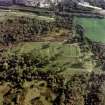Pricing Change
New pricing for orders of material from this site will come into place shortly. Charges for supply of digital images, digitisation on demand, prints and licensing will be altered.
Upcoming Maintenance
Please be advised that this website will undergo scheduled maintenance on the following dates:
Thursday, 9 January: 11:00 AM - 3:00 PM
Thursday, 23 January: 11:00 AM - 3:00 PM
Thursday, 30 January: 11:00 AM - 3:00 PM
During these times, some functionality such as image purchasing may be temporarily unavailable. We apologise for any inconvenience this may cause.
Excavation
Date 1902 - October 1903
Event ID 571731
Category Recording
Type Excavation
Permalink http://canmore.org.uk/event/571731
The fort at Rough Castle is now the best preserved of all the Antonine Wall forts. It is the property of the National Trust for Scotland and under guardianship of the DoE who are currently engaged in clearing operations and excavation work on the site. The Antonine Wall and Ditch are very well preserved along the N front of the fort, and the fort rampart and ditches and the annexe ditches are very clearly visible on the E, S and W sides. (See RCAHMS 1963 plan fig.38). Excavations in 1902-3 and 1932-3 identified the headquarters building, a granary and another stone building, possibly the officers' quarters, within the fort, and the bath-house in the annexe. In a hole (possibly the well) in the headquarters building were found three fragments of an inscribed tablet recording the erection of the building by the Sixth Cohort of Nervii, who also set up an altar to the goddess Victory which was found 200 - 300 yds S of the fort in 1843. These stones are in the N M A S. The small finds from here include some potsherds which seem to be of late 1st c date, suggesting that one of Agricola's small forts may have stood here. No remains of such a fort have yet been detected, but it has been suggested that its N front may have been protected by the series of ten rows of defensive pits (lilia) NW of the Antonine fort, which itself has been altered and modified at least once during its period of occupation.
R Stuart 1852; M Buchanan, D Christison and J Anderson 1905; G Macdonald 1933; G Macdonald 1934; RCAHMS 1963, visited 1958; A S Robertson 1973.











































